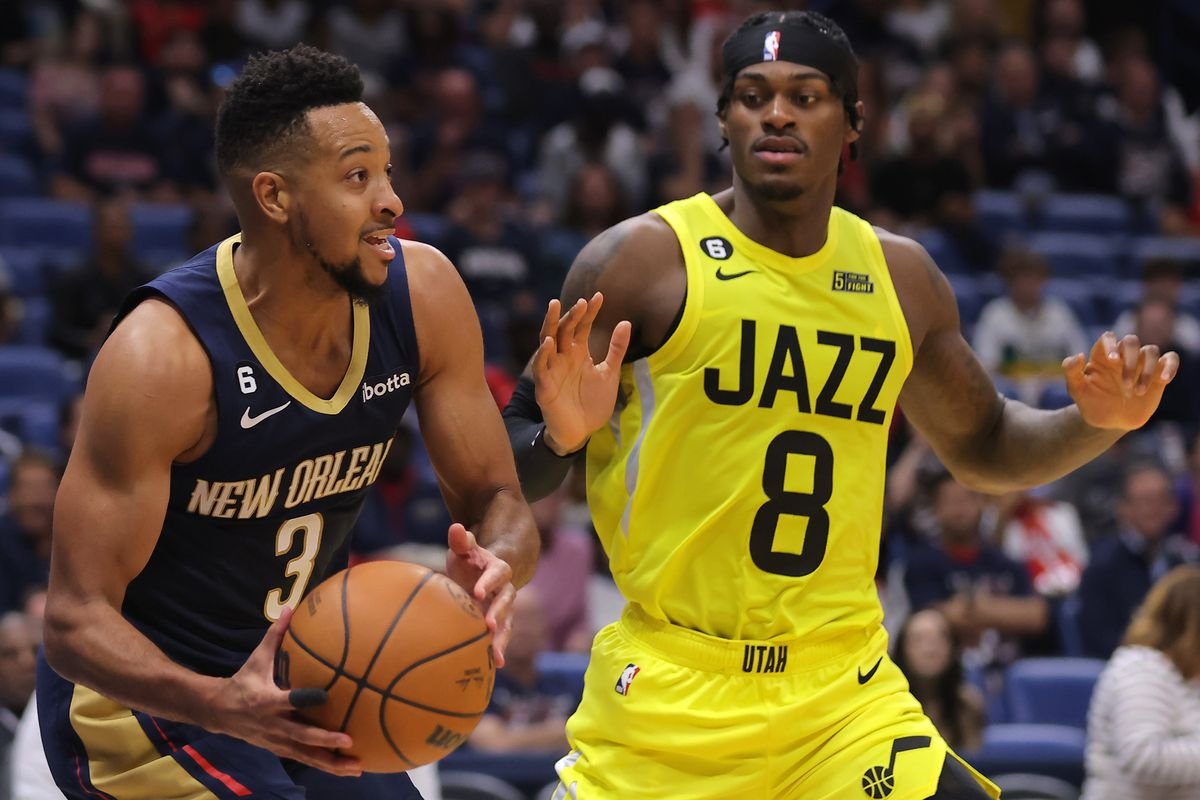New Orleans Pelicans vs Utah Jazz Match Player Stats: A Detailed Analysis
Introduction to the Match
new orleans pelicans vs utah jazz match player stats The impending showdown between the New Orleans Pelicans and the Utah Jazz emphasizes more than just the action on the court; it marks a pivotal moment within the current NBA season. Fans and analysts are keenly observing this face-off, as both teams have shown contrasting trajectories leading up to this encounter. The New Orleans Pelicans have been showcasing a blend of youthful vigor and strategic gameplay, while the Utah Jazz have been recognized for their steady, if not spectacular, performances throughout the season.
Each team’s player stats in their recent games reveal crucial insights into their potential performance. The Pelicans, with emerging stars demonstrating consistency, are relying on their dynamic roster to make a strong statement in this crucial match. Conversely, the Jazz have capitalized on their veterans’ experience, which has played a significant role in their season strategy. This convergence of youth versus experience compounds the significance of the new orleans pelicans vs utah jazz match player stats, as both teams vie for supremacy in a tightly contested conference.
Compounding this competitive atmosphere is the current status of key players from both sides. Injuries can significantly impact game dynamics, and as such, both teams have strategized around their available rosters. Moreover, any recent trades or shifts in coaching staff have further contributed to the unique narrative surrounding this match. Fans can expect an exciting exchange, characterized by not only the players’ skillsets but also tactical adaptations that coaches will implement based on roster changes. As this match unfolds, the new orleans pelicans vs utah jazz match player stats will undoubtedly serve as a critical reference point in evaluating both teams’ performances and overall standings in the league.
Key Player Performances
The recent matchup between the New Orleans Pelicans and the Utah Jazz showcased several standout performances that significantly influenced the game’s outcome. Both teams featured players who not only scored effectively but also contributed in various other facets of the game such as assists and rebounds. For the Pelicans, the performance of their star player was instrumental. Scoring over 30 points, he also managed to dish out 8 assists, demonstrating his ability to facilitate plays while finding success in his own scoring.
On the other hand, the Utah Jazz relied heavily on their leading scorer, who also had an impressive stat line. Not only did he score close to 30 points, but he also recorded a notable number of rebounds, showcasing his versatility. His defensive presence was also felt throughout the match, as he contributed several key steals that shifted momentum in favor of his team at crucial moments.
In addition to the primary stars, the game highlighted some unexpected contributions from lesser-known players. One Pelican in particular carved out a niche for himself, scoring crucial points off the bench that aided in maintaining the team’s competitive edge. Another Jazz player had an impressive showing with a player efficiency rating that exceeded expectations, solidifying their role as a meaningful contributor in what was a tight contest. The advanced metrics reflected these key player performances through their individual plus-minus assessments, illustrating their overall impact on the match’s dynamics.
By analyzing the player stats from both sides, it becomes evident that while established players often dominate the headlines, unsung heroes also play a pivotal role in determining the outcome of tight contests such as the New Orleans Pelicans vs Utah Jazz match. These varied student stats not only enrich the narrative of the game but also provide insights into potential future performances.

Team Stat Comparison
The recent match between the New Orleans Pelicans and the Utah Jazz showcased a riveting contest fueled by contrasting playing styles reflected in their team statistics. Key metrics such as field goal percentage, three-point shooting, turnovers, and rebounds were instrumental in determining the outcome of the game. Analyzing these metrics provides valuable insights into the effectiveness of each team’s strategies.
In terms of field goal percentage, the Utah Jazz demonstrated superior shooting efficiency, making 48% of their attempts compared to the Pelicans’ 44%. This discrepancy highlights the Jazz’s ability to create high-quality shot opportunities, likely influenced by their offensive scheme, which emphasizes ball movement and spacing. Conversely, the Pelicans, while slightly less efficient, demonstrated resilience in attacking the paint, often relying on their athletic players to draw fouls and earn free-throw attempts.
Three-point shooting became a critical factor as well, with the Jazz sinking 12 of their 30 attempts, resulting in a 40% success rate. This proficiency from beyond the arc allowed them to stretch the floor and force the Pelicans’ defense to adjust. The Pelicans, on the other hand, managed to hit only 8 of their 28 three-point attempts, reflecting a struggle to find rhythm in their perimeter shooting. The variance in these shooting statistics illustrates a tactical divergence in how each team approached their offensive possessions.
Turnovers also played a pivotal role in shaping the match dynamics. The Pelicans recorded 15 turnovers, which hindered their ability to sustain offensive pressure and capitalize on scoring opportunities. The Jazz, with a more disciplined performance, limited their turnovers to just 10, showcasing their focus on protecting the ball. Additionally, the rebounding battle was tightly contested, with both teams vying for control of the boards, ultimately leading to second-chance opportunities that could swing momentum.
In conclusion, the comparative analysis of the New Orleans Pelicans vs Utah Jazz match player stats reveals the intricate interplay between individual performances and team strategies. The effectiveness of each team’s approach, illuminated through various stats, was pivotal in determining who emerged victorious in this matchup.
Takeaways and Future Implications
The recent matchup between the New Orleans Pelicans and the Utah Jazz provided a wealth of insights regarding player performances and team dynamics. One of the primary takeaways from the encounter is the evident strengths each team exhibited, as highlighted by the new orleans pelicans vs utah jazz match player stats. For instance, the Pelicans showcased their capability to dominate the paint, benefiting from the offensive rebounding prowess of their big men.
Conversely, the Jazz displayed an effective perimeter shooting game, which could serve as a crucial advantage in future matchups. The statistics indicate a clear divergence in team strategies, with the Pelicans favoring inside scoring while the Jazz opted for a three-point-based offense. Such contrasts make future encounters between these two teams particularly intriguing, as both will have to adapt and strategize based on past performances.
Furthermore, individual player statistics reveal stunning performances that may impact their standings within the league. Players who have excelled in scoring, assists, or defensive plays during this match are likely to be key contributors as the season progresses. The analysis of the new orleans pelicans vs utah jazz match player stats suggests that players who consistently deliver high performances can solidify their roles in the team or even attract attention from other franchises pursuing trades or free agents.
Looking ahead, the implications of this match on playoff positioning cannot be understated. Both teams are vying for favorable playoff spots, and each game will be critical in shaping their trajectories. As the season unfolds, it will be vital for both the New Orleans Pelicans and the Utah Jazz to leverage their respective strengths while addressing their weaknesses to enhance their chances of success.




Post Comment